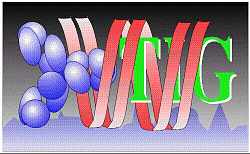
Search within Therapeutic Immunology Group Web Site:
A brief guide to Peripheral Tolerance
Steve Cobbold
Introduction
This brief giude is for those of you who are interested immunology and would like to know more about some of the areas that most interest our group. Although I have tried to simplify everything as much as possible, I expect some knowledge of immunology and its jargon are almost certainly needed to make much sense of this guide. A glossary of terms can be found here and is also cross-referenced throughout the text.Reprogramming the Immune System for Tolerance
The normal immune system generates clones of T-lymphocytes more or less at random hoping that when the body is invaded by any infection or foreign substance a few of those T-lymphocytes have receptors able to recognise the foreign molecules and react against them. In order to avoid autoimmune disease, most T- lymphocytes with potentially self-reative receptors are either deleted or inactivated during development.
Self tolerance, graft rejection and autoimmunity (Click for full size diagram).
A major goal in immunology is to be able to specifically turn off the clones of T-lymphocytes that are reacting to self tissues (in the case of autoimmune disease) or that are reacting to an organ transplanted from a donor with a different tissue type (recognised by alloreactive T-lymphocyte clones).

Immunology of rejection (Click for full size diagram).
Current treatments do this by suppressing the whole immune system, including those T-lymphocytes protecting the body from infections.

How immunosuppression works (Click for full size diagram).
Our goal is to understand enough about how the immune system works to develop methods allowing us to reprogram just those clones of T-lymphocytes involved in autoimmune disease or graft rejection so that they specifically inactivated, or in other words become tolerant of their target tissues, and will thereafter treat them as if they were normal self tissues.

Tolerance induction (Click for full size diagram).
Look here! if you want to know about Tolerance in more detail. Recently updated
Recently updated
Tolerance is infectious
Very recently, we have found that once the immune system is tolerant of, for example, a skin graft, you cannot break tolerance by infusing even large numbers of naive or even fully aggressive T-lymphocytes. If you follow the fate of these infused cells, you find that over a period of about two weeks, they are themselves guided towards tolerance by the tolerant immune system, and these secondary tolerant T-lymphocytes can even act to suppress any further infusions of potentially aggressive cells. So it looks almost as if tolerance is "infectious", being passed on from one set of tolerant T-lymphocytes to another.We have recently worked out some of the molecular mechanisms of infectious tolerance - for more details see here.
Reprogramming the Immune System in Autoimmune Diseases

Infectious tolerance in treating autoimmunity (Click for full size diagram).
If we could induce this form of infectious tolerance, perhaps by using monoclonal antibodies to T-lymphocyte molecules such as CD4, we would not only have a potential treatment for autoimmune disease, but the infectious nature of the tolerance should ensure that any tendency for new T-lymphocytes (which are constantly being produced by the thymus) to cause further autoimmune disease would be suppressed, perhaps leading to an effective cure!
BibliographyIf you would like to know more, or have any burning questions, you can E-mail me:

"Developing short-term treatments for long-term outcomes"
Related topics:
![]() Making mAbs in large (gram) amounts
Making mAbs in large (gram) amounts
![]() SciTopics Page:Tregs and tolerance
SciTopics Page:Tregs and tolerance
Last Updated 5th June 2009 by Steve Cobbold